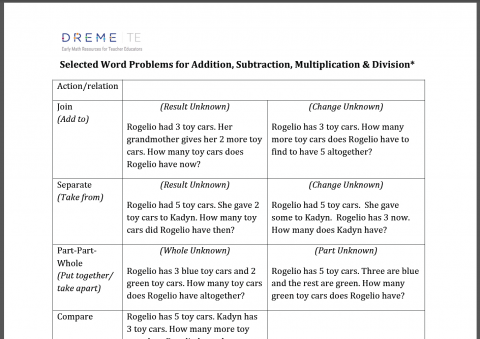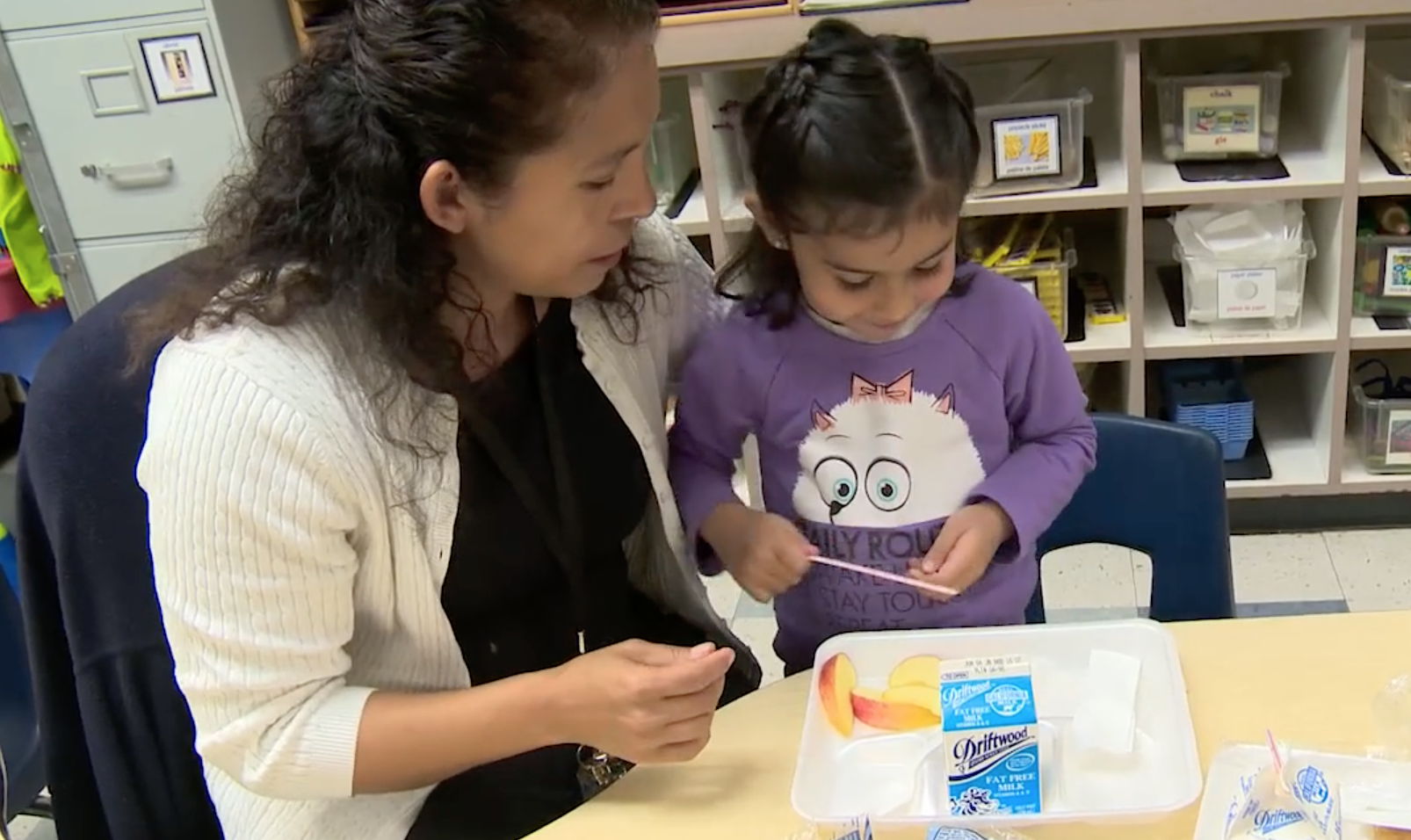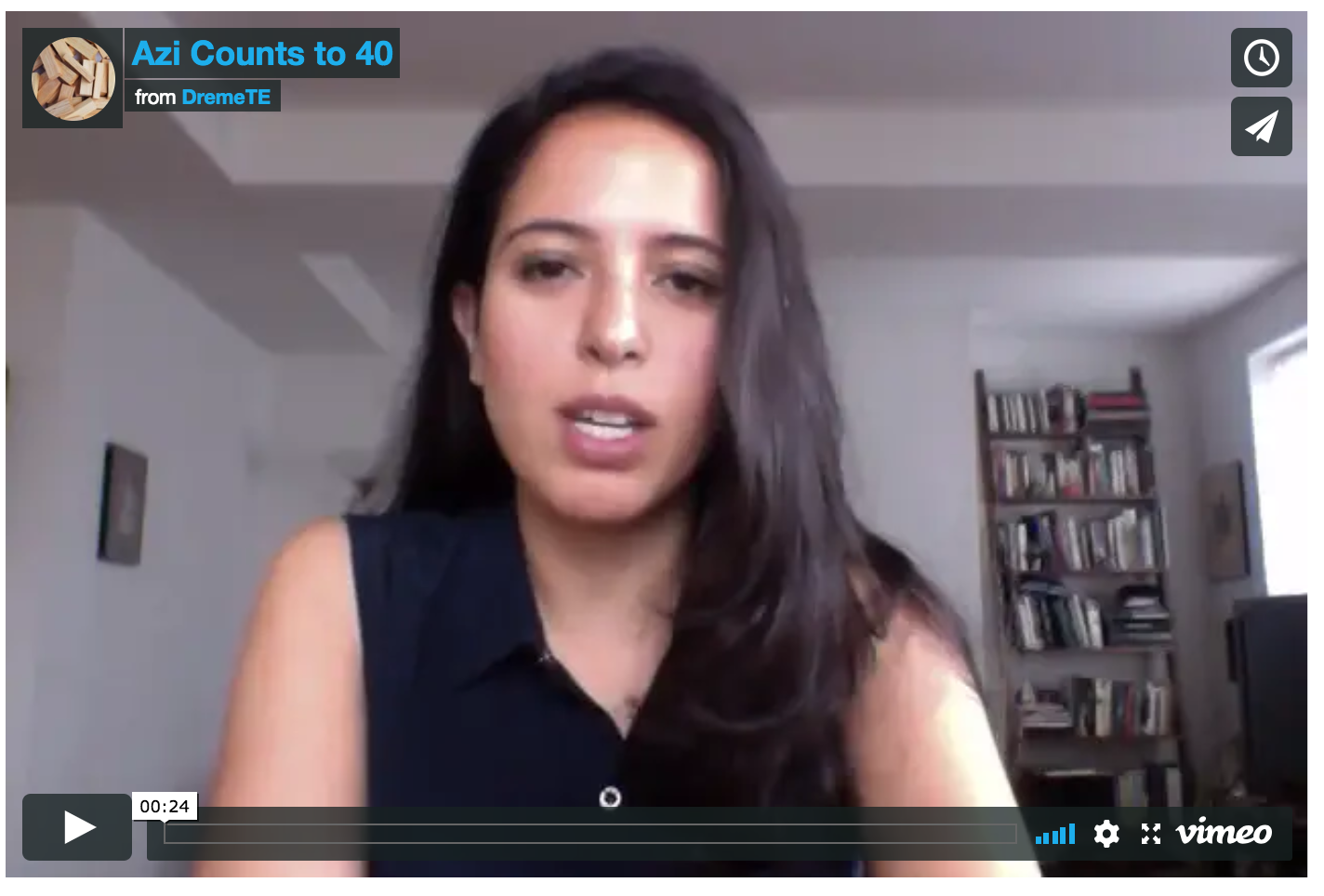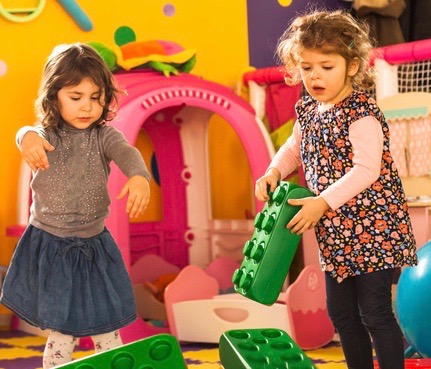This activity supports participants to examine important distinctions among problem types. We describe some ways you might engage participants in these problem types to help them see the range of problems, how they might be easier or more difficult for young children, and how young children would solve them.
by Angela Chan Turrou and Megan Franke
Activity for Teacher Educators
Choose one or more of the following activities to engage participants around problem types. These activities can be implemented with participants in connection with videos and readings about how young children engage in operations.
Preparation
- Read through Making Sense of Problem Types for background on why understanding different problem types is important for early childhood educators.
- Download the Problem Types Chart and make it available as a handout for participants (see below).
Adult vs. Child Thinking
Pose the three word problems featured in Making Sense of Problem Types to participants. Ask: “How would adults solve these problems? How would young children solve these problems? Is it the same or different, and how?” It might help to scaffold adult engagement by thinking about larger numbers, such as 61 and 48 instead of 6 and 4.
The goal here is to support participants to take on the lens of approaching word problems from the perspective of young children.
- Liz had 6 apple slices. She ate 4 of them. How many apple slices does Liz have now?
- Liz has 4 rocks in her collection. How many more rocks does Liz need to collect so that she will have 6 rocks?
- Liz has 6 snow globes and her brother has 4. How many more snow globes does Liz have than her brother?
Examine the Problem Types Chart
Display the Problem Types Chart and have participants examine it in small groups. Encourage them to discuss what relationships they see across problems, how they think the chart is organized, what the terms mean, and which problems might be easier or more difficult for young children to solve. Share out to the whole group what they are noticing and discussing. As you facilitate the discussion, help participants see the different types of addition/subtraction problems in the top four rows. Teachers often only think of the result unknown problems when considering addition and subtraction. Highlight how the Join and Separate problems involve an action happening to the quantities and change occurring over time (e.g. Rogelio had 5 toy cars, but then she gave 2 to Kayden, etc.). In contrast, Part-Part-Whole and Compare problems do not have these explicit actions and change over time. Their quantities remain static (e.g. nothing is happening to Rogelio's and Kayden's cars, etc.).
Transform One Problem to Another
Ask participants to write a Join Result Unknown problem using a context that they think would be interesting to children. Have them share their word problem with a partner to make sure they have written one of the correct type. Then, ask participants to alter their current problem to become a Join Change Unknown, keeping the context and number relationships the same. Share out some examples of problems and highlight what participants needed to do to change from one problem type to another. Repeat this process with a different problem type, such as Part-Part-Whole.
Explore Similarities and Differences Across Problems
Ask participants what they notice about the differences in the equal grouping problems in the bottom three rows. Help them see that the multiplication and division problems all involve working with groups of things. When solving these, students are manipulating groups rather than only single objects. All that is changing across these three problems is what is known and unknown. Asking teachers to use a direct modeling strategy (see Beginning Strategies for Solving Problems) and write a number sentence to match each problem can help teachers see the action and what is unknown (also useful across the entire chart).




